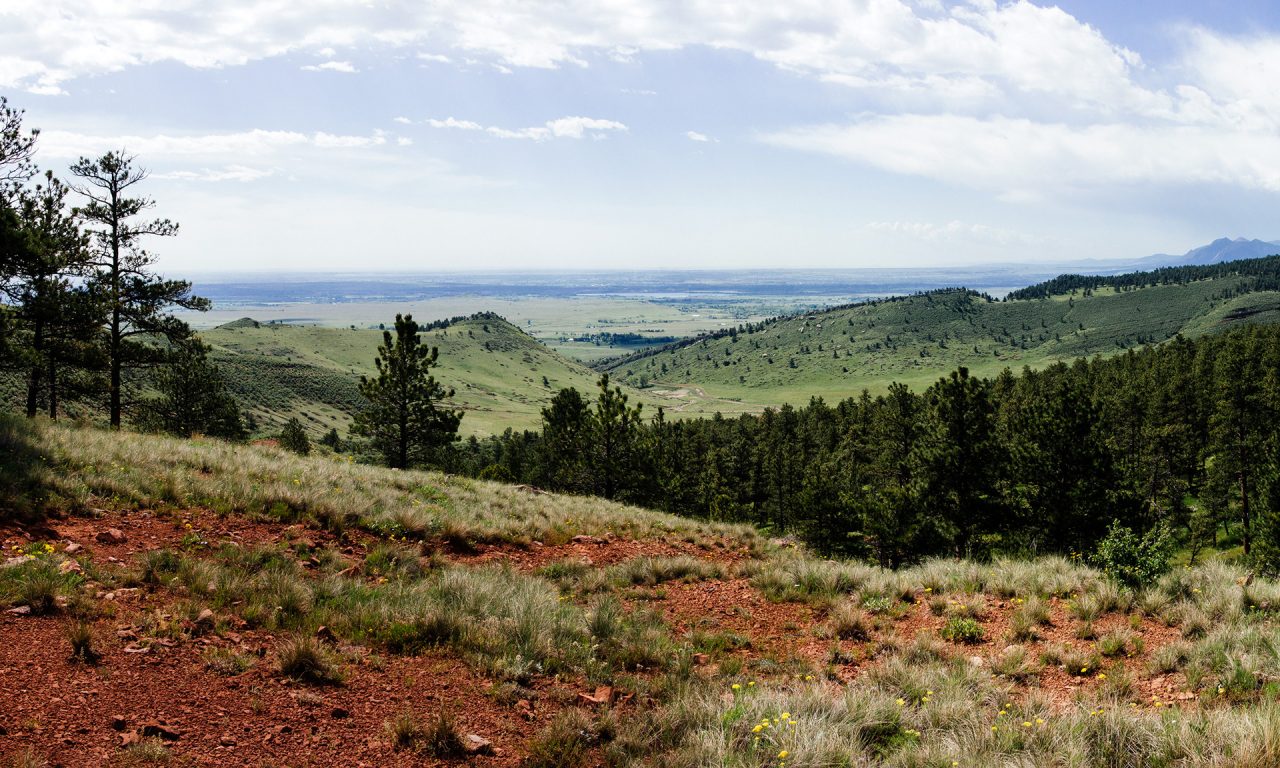Boulder County protects approximately 104,339 acres of land composed of open space properties, conservation easements on both private and public lands, and leases. With so much property you may wonder how Boulder County was able to acquire the land over time. Let’s start at the beginning.
Boulder County began acquiring land for open space in 1973 by obtaining access to Bald Mountain Scenic Area through a lease from the Colorado State Land Board. And in 1977, Betasso Preserve became the first large open space property purchased by the department.
Considerations Before Purchase
When acquiring land for protection, Boulder County Parks & Open Space (BCPOS) has numerous elements to consider, including the mission statement for BCPOS: to conserve natural, cultural, and agricultural resources and provide public uses which reflect sound resource management and community values. In a nutshell, the Real Estate Division staff look for land that is threatened by development near or adjacent to existing open space, prime agricultural land, wildlife habitat, riparian and scenic corridors, or land that is useful for trail connections. These land acquisitions are completed through two main avenues, regulatory and monetary.
Acquisition Methods
Regulatory land acquisitions usually involve Boulder County’s Land Use Department. The four main regulatory methods are intergovernmental agreements, subdivision dedication, transfer of development rights, and transferable development credits. Intergovernmental agreements are limits on growth agreed upon by the county and municipalities within the county. Subdivision dedication occurs when a developer dedicates land from a subdivision for county parks or open space. For example, a landowner may qualify for double density, two homes instead of one, if the homes are clustered in less than 25 percent of the total property acreage. Transfer of development rights move development so homes are not scattered on the landscape and instead are clustered together or next to cities. Transferable development credits (TDCs) limit the size of homes in rural areas and allow homes in more urban areas to be larger. Bonus TDCs can be awarded to a landowner when BCPOS determines the property has open space features worth protecting. A public marketplace for selling TDCs is available on the county’s website.
Boulder County also uses monetary resources to purchase land only from willing sellers. Monetary acquisitions include joint purchases, full price purchases, and bargain sales. Joint purchases occur when the county partners with municipalities to acquire land, water, and mineral rights through property-specific agreements, using county funds and municipality funds. The county can also acquire land, water, and mineral rights on its own through full price purchases. Landowners can decide to sell their property to Boulder County for partial payment and donate the rest of the value, resulting in an overall land acquisition below market value, known as a ‘bargain sale.’ Land donations for open space purposes are also accepted by the county.
Each acquisition results in an ownership interest, including fee title (outright county ownership and management), conservation easements (privately owned and managed, but with agreed upon restricted use and development), trail easements, management agreements, and access easements. Not all of the mentioned land acquisition scenarios cost money, but many do. So, where does the money come from?
Funding Sources
Boulder County receives funding for BCPOS through many avenues, including sales and use taxes. The first voter approved sales and use tax for Parks & Open Space passed in 1993, providing Boulder County with more monetary resources to acquire land. Residents have passed additional sales and use tax resolutions for open space, with the current county-wide open space sales and use tax at 0.6 percent. Property taxes provide approximately $4 million per year for open space acquisitions. Additional funding comes from the State Lottery Fund and various grants like Great Outdoors Colorado and the Land and Water Conservation Fund. Private monetary donations to BCPOS can also be designated by donors for land acquisition use.
With ongoing community support, Boulder County can continue conserving the county’s rural character, preserving natural resources, protecting cultural resources, providing passive recreation opportunities, and protecting land and water resources for agricultural use.
Open Space By The Numbers
- County Open Space Properties: Approx. 62,271 acres
- Conservation Easements on Privately-owned Land: Approx. 39,023 acres
- Conservation Easements on Publicly-owned Land: Approx. 2,13 acres
- Trail Easements & Leased Land from Colorado State Land Board: Approx. 909 acres
Questions about open space land acquisitions? Contact Janis Whisman at jwhisman@bouldercounty.org.


